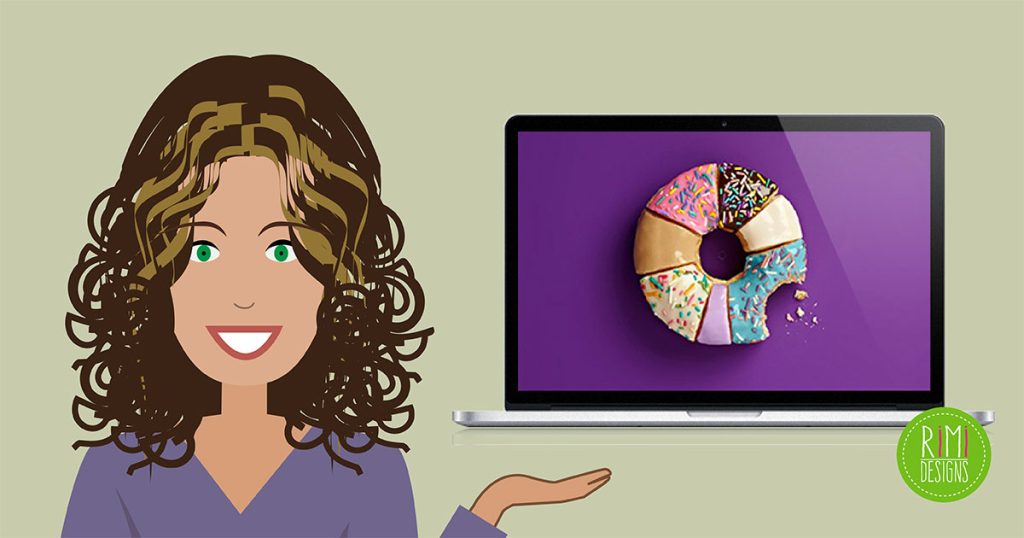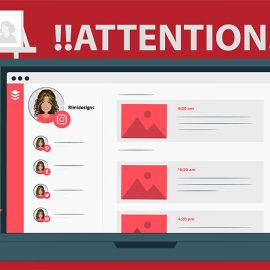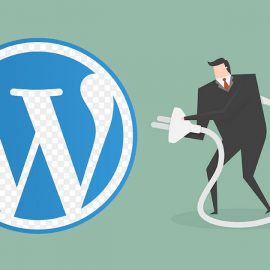
How to Design the Perfect Single Page Website
Single page designs can be an excellent technique for tackling smaller websites, even those that you might not think could ever be done without multiple pages. There are tons of great reasons for using a single page site – from ease of maintenance to reduced bandwidth needs.
If you’re tackling a shorter website, one that would normally have a handful of pages, consider using a single page and see if it will make the project easier and more user friendly.
Read on for more information on the benefits, when and when not to use them, and some best practices you should follow.
The benefits of a signle page website
Obviously, single page designs are not ideal for every project. But there are a host of reasons to use them if they’re a possible fit.
1. They are intuitive to use
By default, all a user needs to know to navigate a single page website is how to scroll. You might include arrows or other navigational clues, but with rare exception, simply scrolling will bring your visitors from one section to the next.
You’ll never have to worry about your visitors getting stuck in multiple layers of navigation, endlessly searching for what they need.
The use of a header or other navigational links is often helpful, if there are multiple sections on the page. But even without them, the website is usable.
2. It can be faster and easier to maintain
While this one is not a given, a well-coded single page website is probably going to be faster to code than a multipage one.
The design process can sometimes take less time, though that depends on how complex the single page is going to be.
A single page website can also impose certain design restrictions that speed up the process, once you have a basic layout in mind. Moreso than a multipage website, a single page website has to have sections that work seamlessly together. That kind of restriction can really speed up page development, once you’ve clearly defined what you can and can’t do.
Maintenance can be easier, too. When you only have a single page to deal with, maintenance is more streamlined, so long as your code is written well to begin with.
3. You’re forced to simplify
This one builds off the previous point. When you only have a single page to work with, you have to simplify things to their most essential components. No more pages and pages of useless marketing propaganda. You have to get to the point right away.
4. Better SEO potential
Quality inbound links are a big part of how well a website performs in search engines.
While search engines aren’t necessarily the largest traffic source for a lot of websites, they’re still generally important. By only having one page, you only have one page being linked to. That can increase the importance of the site as far as search engines go.
5. Storytelling can increase action
Single page websites often use a storytelling angle that multipage websites aren’t as good at. This can increase conversions and inspire visitors to take action.
People are used to following stories, both online and off, so this has obvious user experience benefits. We’ve been reading and hearing stories since we were children, so it’s something that comes naturally to us.
6. Easier to organise
There are no more endless lists of pages and subpages to organise. No more wondering if this page or that page should be a parent or a child. No more huge navigation menus and submenus. It’s all on one page.
And whether you decide to include navigational links, or simply let users scroll, is up to you and whether you think it will add to the user experience or not. That’s just not an option, when a website has multiple pages.
7. Reduced bandwidth
While this isn’t as much of an issue on the hosting end anymore, consider how many users are accessing your website using mobile devices these days. Decreasing the amount of bandwidth your website takes is appreciated by users with limited data plans.
8. Eliminate mobile websites
Responsive design is, of course, not limited to single page websites. But the more complex a website is, the more difficult it is to make it work well on a smaller screen, even with a responsive design.
A single page wwebsite is, by necessity, not complex. Making the design responsive is generally easier. Simplified navigation and similar changes also make a design that works well on small screens easier.
When to use and when not to use a single page website
While there are a lot of benefits to single page websites, they’re not a perfect, one-size-fits-all solution. There are plenty of times when you shouldn’t use a one page design, while there are plenty of other times where a single page site makes a lot more sense than a multipage one.
If you’re setting up a website that would only have a handful of pages anyway, then a single page website might be perfect. Condensing everything onto one page can give the overall website a more modern look. And if it’s light on content anyway, then a single page website can make it look like it has more substance.
Another common example of the one-page site is the prelaunch website. These are, more often than not, a single page, often with a form for a newsletter sign-up. In most cases, the information provided to the public during the prelaunch can easily be organised on a single page. So it makes sense to consider this style first when designing these pages.
Single product e-commerce websites are another place where single page websites can be great.
If you’re only selling one product, whether that be a physical product or a digital one, then why bother with multiple pages? A simple, single page website can be a much better sales tool. Avoid it for websites that have more than a dozen or so products.
A simple online store can easily be held on a single page, with modal windows for loading product details and the checkout process.
When not to use a single page website is pretty straightforward. Webites that are large, complex or by default need to have large amounts of information, are not suited to a single page website. In those cases, you’re much better off with a more traditional website structure.
Best practices for single page websites
Most of the principles of good design are still applicable in single page websites, as they are with any good website design. But there are some additional things you need to keep in mind, some of which have already been touched on above.
1. Keep it simple
Trying to make a design that’s too complex for the content you’re trying to present isn’t doing you or your users any favours. Instead, simplify both your design and your content as much as possible, while still presenting what you need.
2. Navigation links are still helpful
Just because users can scroll to navigate your website, doesn’t mean that’s the most user-friendly way to do so. This is especially true if you have a long page with many sections.
Unless there’s a very good reason not to include them, adding navigation links to particular sections makes your website more user friendly.
3. Divide up your content
A single page doesn’t mean everything has to be one long section. In fact, it shouldn’t be. Divide your content into logical chunks and sections so that users can better find what they’re looking for.
4. Do something with all that background
Single page websites tend to have large backgrounds. Granted, sometimes those backgrounds are left plain or with a repeating pattern. But other single page websites take advantage of all that space to do something creative.
This can also help to divide up your content, as already mentioned. Your background doesn’t have to be one single image. It can be a series of images, if that fits your content better.
Conclusion
Single page designs can be an excellent option for a lot of different kinds of websites. While they’re not the be-all and end-all of small website design, they are worth considering on many projects. Consider the reasons for using a single page, and then consider the reasons not to, and decide from there.
SOURCE: Webdesigner Depot
Even a single-page website can bring in new clients. All you need is: a) an irresistible background photo b) some basic info c) links to your social media channels. Need a professional looking website?



